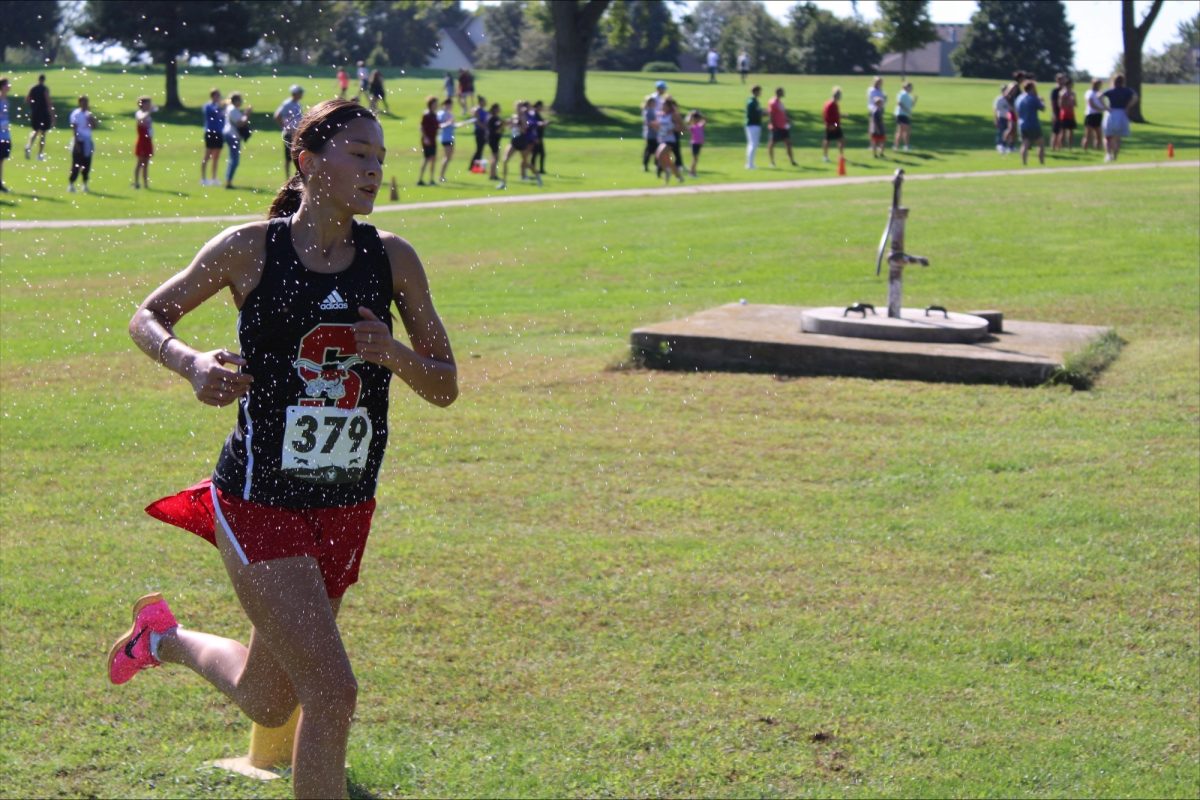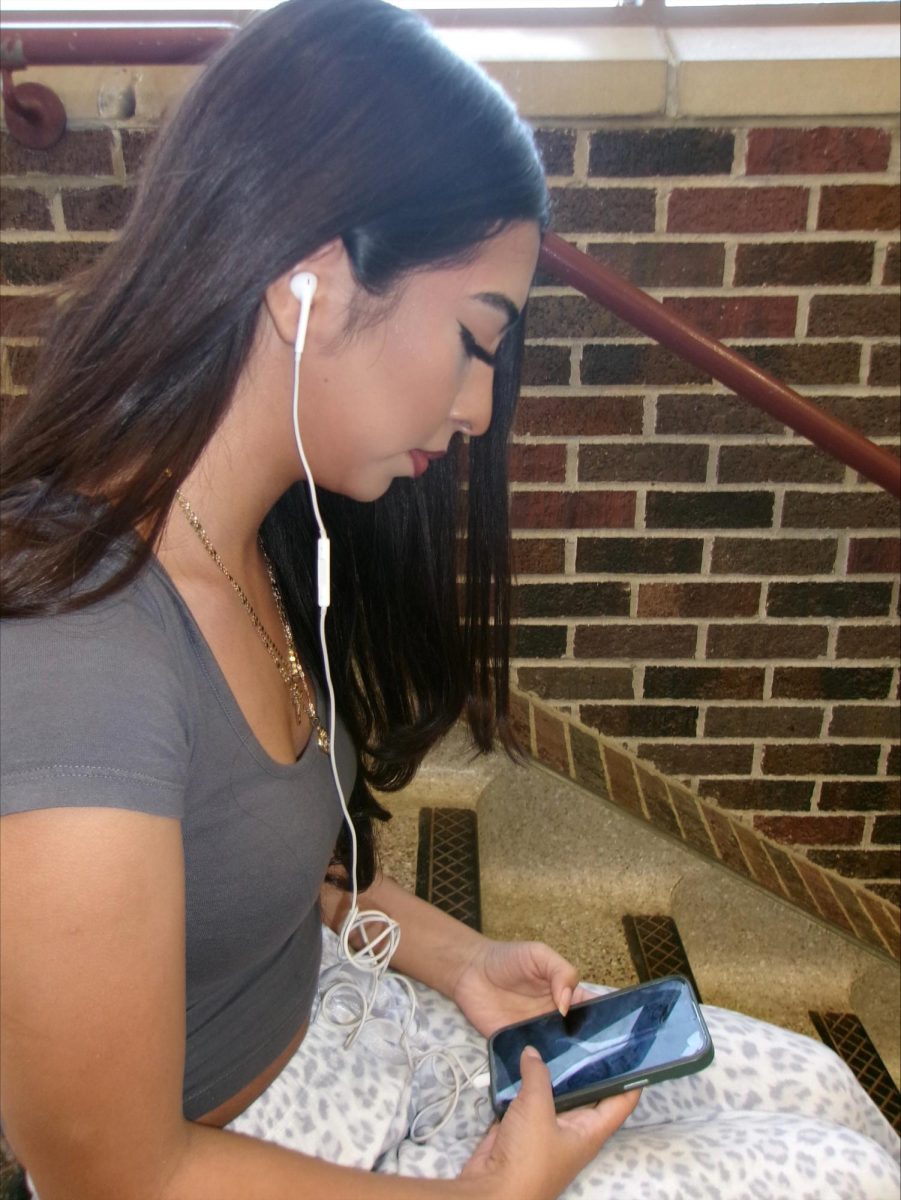Editor’s Note: The staff of The Tooter wishes South senior and Tooter editor Ambrose Vela the best of luck going forward!
Review
Netflix’s series “Bridgerton” hit the ground running upon its release in 2020, quickly becoming not only one of its most popular shows, but an explosive global phenomenon.
Not only did its popularity stem from many watchers being stuck at home amid COVID-19 restrictions, but it can’t be denied that many watchers tuned in for the costumes. Social media was ravenous for the show, and with so many eyes on the costume design, a couple (or quite a few) period inaccuracies could not go unnoticed. With a third season on the way, it begs the question of how the costumes will change this time around, if at all.
One such inaccuracy concerns Lady Featherington, played by Polly Walker. Lady Featherington is often seen in dresses that are dreadfully against the fashion status quo for the time. During the regency era, the popularity of the empire line and a straight silhouette in women’s dresses turned the small waist that bloomed out at the hips into a full skirt into history. Instead, one’s figure was mostly hidden under the dress’s silhouette, often called a column gown. But one exception to this lies in Lady Featherington’s dresses. She is seen wearing dresses that not only tightly accentuate her waist in an hourglass figure look, but the use of a sweetheart neckline also further accentuates her features. And in theory, there’s nothing wrong with that. When I see her costumes just as they are, I do find the dresses very beautiful and well-made. But when you put them into “Bridgerton,” they seem out of place.
I know that the whole point of Lady Featherington’s outfits being out of fashion is to deepen her character, who has a habit of going over the top when it comes to clothing (One look at the gaudy dresses she makes all her daughters wear proves this sentiment). But I feel as though they could’ve put her in more period-accurate dresses while still getting that characterization across, like the dresses her daughters Prudence or Philippa (played by Bessie Carter and Harriet Cains respectively) wear.
Another inaccuracy is a more general one, but over the course of both seasons I have noticed an utter lack of traditional or historically accurate daywear. Oddly enough, some characters are often seen promenading in the daytime wearing illustrious gowns typically reserved to be worn during the evening, most likely at formal events. Daywear usually included gowns with collars and sleeves and were often worn with bonnets. Even if there are people who would counterargue with me that the specific elements of the dress don’t matter, at the very least they could’ve included bonnets in the women’s daywear.
Dearest reader, I have saved my most passionate and opinionated critique for last which can be summarized with a question: Why is there any tightlacing in Bridgerton? For those fortunately unaware, tightlacing is the practice of lacing one’s corset extremely tight for a myriad of possible reasons. And there’s nothing wrong with including this in period pieces where its inclusion makes sense, but in this case it does not. As I’ve previously stated, the popularity of the empire line in womenswear turned the tightly laced corset to accentuate one’s waist obsolete. Thus, stays were worn in place of corsets – undergarments that were very similar – but they were rarely ever tight-laced, and the hem usually ended just above the waist or under the bust, not down to the waist or hips. So, why does season one of Bridgerton contain tightlacing of full corsets?
Not only are characters seen wearing full corsets that were dreadfully out of fashion for the time, but the corsets were laced so tightly there were complaints and even cases of injury, both fictional and very much real. In the show, Prudence Featherington faints in the presence of the Queen due to how tightly her corset was laced. Though more importantly, Simone Ashley, who played the charmingly witty Kate Sharma in season two, bemoaned such corsets in an interview with Glamour UK writer Katie Glass. “So, I had this massive portion of salmon and that’s when I needed to be sick, basically because I was wearing the corset. I realized when you wear the corset, you just don’t eat. It changes your body … I had a lot of pain with the corset, too; I think I tore my shoulder at one point!” Ashley told the outlet.
Would someone on the “Bridgerton” team like to explain to us all why Ashley is wearing a corset so tight she feels she can’t eat in a show that takes place when the empire line is in fashion?! One look at the costumes for Kate Sharma simply proves a tight-laced corset is unnecessary, made obsolete by the straight silhouette of column gowns. Though I am a stickler for historical accuracy in the costuming of period pieces, I would not be nearly as incensed if the usage of the wrong corset didn’t cause bodily harm to one of the actresses. I implore anyone and everyone in charge of costumes to do better in season three.
I would like to close this review on a positive note, so I will shift focus toward the Queen of England herself, played by Golda Rosheuvel. I believe that in the case of Queen Charlotte’s elaborately exquisite gowns, period inaccuracy was purposefully used to bring further depth to her character, which I must commend. Though “Bridgerton” takes place in the regency era, Queen Charlotte is always seen in gowns distinctly reminiscent of the Georgian era, both in “Bridgerton” and its spinoff that takes place during the Georgian era “Queen Charlotte.” Though some on social media (me included) have theorized that this is a choice Charlotte makes for her husband’s sake so he may recognize her, costume designer Lyn Paolo commented on this choice to TODAY.com.
“Queen Charlotte was stuck in a moment in time, as some women do in life. Whatever the fashion of their youth was, they stay there.” And I personally can’t disagree with this notion, as it’s something I’ve witnessed contemporarily. Though I do still hold firm, the character’s choice stems from how much she loved George and this specific part of her life (I feel obligated to remind readers that I reference an entirely fictional version of the real King George and Queen Charlotte of England), and Paolo seems to echo this thought. “I felt like she was sort of under a glass dome,” she said. “And she wasn’t able to change for many reasons. That was the happiest time in her life; that was how she felt comfortable.”
In short, the costuming in “Bridgerton” is beautifully flawed. Is it historically accurate? Most often not, which irks me to no end. But that doesn’t mean I am blind to the better parts of the costumes. Each gown is stunning in its own regard, and I must appreciate the pops of color in menswear that we sorely lacked both back then and now. Ultimately, I strive to point out the historical inaccuracies but still commend the costuming department on both “Bridgerton” and “Queen Charlotte” and remain hopeful for what this upcoming third season will hold.
































denise • May 15, 2024 at 1:56 pm
I LOVE your story so so much, i miss you Ambrose, lots of kisses from Denise!! 🙁
Sofia Hof • May 15, 2024 at 11:29 am
SUCH a great article!!!